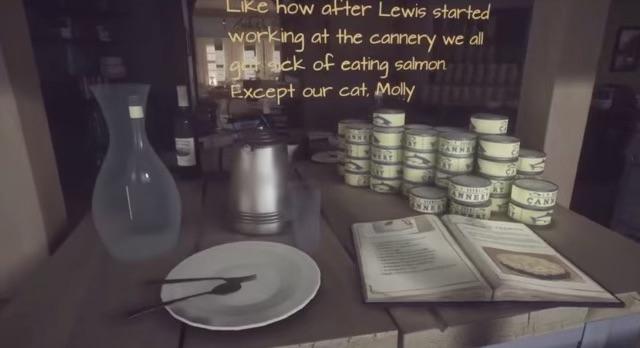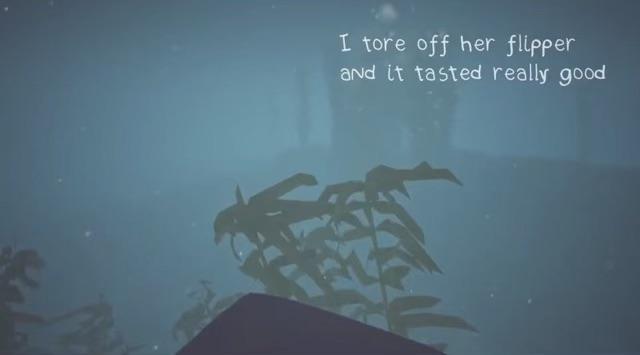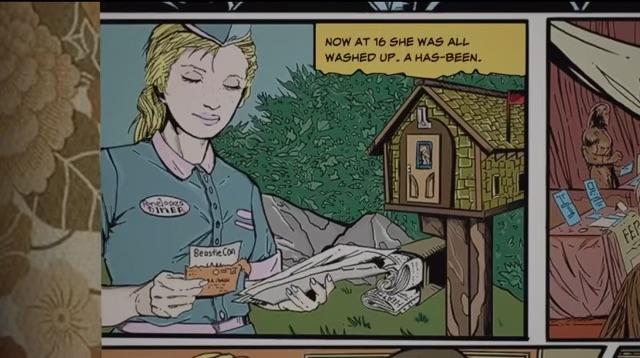I played “What Remains of Edith Finch” earlier this week on PC and got through most of the story.
“What Remains of Edith Finch” is an interactive narrative developed by Giant Sparrow and is known for its unique blend of exploration and storytelling. “What Remains of Edith Finch” is available on multiple platforms, include console, iOS, and PC. The target audience are for teens or older, which I agree with since the game gets a bit dark at times.
The story sets place in the Finch family home and follows Edith Finch, the last surviving member of her family, as she explores the house and uncovers the stories of her relatives who met untimely deaths. Each story is presented as vignettes, and allows players to get a glimpse into the lives of other Finch members. These experiences employ the act of walking as a central mechanism for storytelling, using it for deliberate pacing, environmental design, and for player exploration. Through walking, players are able to immerse themselves in the fragmented history and emotional journey of the Finch family, as both a reflection of mortality and family.

[ scene from Finch Home, fish canneries ]
The act of walking through the house is a deliberate pacing mechanism that allows for players to absorb the atmosphere and progress in the narrative at their own pace. The game even goes as far to restrict players to a walking pace, encouraging them to take on more of an observer role. Unlike its fast-paced alternatives, “What Remains of Edith Finch” compels players to slow down and absorb the intricate details of its environment, from the … to the …. This then creates suspension and tension as it allows you to carefully take in the creaking floorboards, distant sounds, and the soundtrack. Moreover, the mechanic of walking itself is a player-controlled choice. While the game restricts movement speed, it grants players the freedom to stop for as long as they desire. This reinforces the sense of agency as players use walking to signal their readiness to progress in the story. By lingering before entering a new room, for instance, players can brace themselves for the emotional weight of the story and spend time reflecting on the stories they have heard. For example, in my own play through, it was feeling nauseous from the movements after playing for awhile. I was able to step back from the story and gather some air rather than being forced onto the next narrative immediately.

[ scene underwater as Molly (shark) ]
Furthermore, the walking mechanic introduces non-linear narratives and environmental storytelling. Since there is autonomy in walking and most of the vignettes are shown on conditions/triggers, players can explore rooms in their preferred order or whichever event trigger they walk into first. The walking mechanic even takes on different forms as players inhabit the perspective Finch family members, offering a diverse range of experiences and storytelling techniques. Often times, players see the events that were transcribed about their death in first person and “walks” as these characters in addition to Edith. For instance, in one narrative, the player assumes the role of Molly and first walks to the bathroom before becoming a cat, owl, shark, and snake. Taking on these forms, in addition to the verbal and text narrative that was displayed, allowed for a more immersive and empathetic gameplay. This forges emotional connections that resonates with the player throughout the game. Even themes and styles of each Finch vignette differed. For example, Molly’s story was narrated in first person and was in her own voice, while Barbara’s story was more comic styled and had a male narrator.

[ Barbara reading the mail in comic strip ]
Overall, these dynamics that stem from the walking mechanic allows for fun through exploration. Players are encouraged to investigate and explore throughout the Finch Home. Through these interactions, we are able to discover secret passages, gather hints and clues that allows us to unlock more vignettes. The walking mechanic is at the core differentiator that sets What Remains of Edith Finch from pure storytelling.


